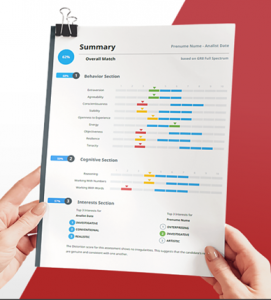A Coaching Culture – how does this Protect Productivity and Profit?
You need to attract and retain the best talent for your organisation and adopt a coaching culture to ensure you win.
However, as the vaccine rollout in Australia gains momentum and the economy continues to rebound, research tells us the labour market will get tighter. For this reason, this situation will result in the war for talent becoming more likely to happen.
Hybrid work arrangements and work from anywhere policies are now the norm in most organisations. Then, to win this talent war, it’s now mission-critical:
- to have your dispersed team highly engaged
- led by outstanding remote managers
- supported by a strong organisational culture.
Productivity
Markedly, more than 70% of employees state they are more productive working from home, and businesses report 47% productivity increases during COVID.
Most business leaders agree that increasing employee engagement increases productivity significantly and improves bottom-line profit.
The fact is, it’s never been more important to focus on the productivity of your remote teams for the long term. And equally, ensure your managers feel equipped with the skills and tools they need to meet and exceed company goals.
Managers hold the key
If you have been fortunate to work for a great manager, I’d like to invite you to reflect for a moment. What was great about them? How do you remember them? Certainly, the fact is that managers can make or break a team.
The Oxford English dictionary defines a manager as “a person responsible for controlling or administering an organisation or group of staff”.
This is one definition; rather, my personal definition of a manager in 2021 and beyond is a “person that leads, supports, and develops a team of people to deliver the organisational goals.”
By and large, the way we work has shifted forever. Being a manager has always been a tough gig, but in the hybrid environment, it sucks!
So how can you ensure your managers are ready for the hybrid normal?
Future-ready culture with a coaching culture
A culture of coaching is an approach in which leaders, managers and staff members work together to increase individual, team and company organisational performance.
The future hybrid workplace with a strong culture will be one where workers feel empowered to work towards their own goals independently. Managers who foster this type of working environment will positively impact employee engagement and organisational productivity.
Gallup research has shown that managers are a massive influence on engagement rates. It was found managers account for at least 70% of the variance in employee engagement scores across business units. And with high engagement rates comes better company results.
So how can you transform your managers into coaches to create a culture of coaching in your workplace?
Teach coaching skills
The first steps are knowing:
- who you are as a leader, and
- whom you have on your team.
Its commonly accepted that not everyone has the required traits to work remotely long term. And business WHS responsibility for their employees does not change just because they are not working at the office. The solution we recommend is using established science to predict how your managers and team members will perform in a long term remote/hybrid environment.
I’ve used many people assessment tools over my 20+ years as a coach and a people leader. With this in mind, I find the bespoke next-gen people assessment tools from Great People Inside are easy to use. And, their predictive capability and insights are second to none for this exercise. They are outstanding, too, when you’re hiring a new remote employee. They truly de-risk the recruitment process and increase your success rate by 300%!
Not all managers have a coaching mindset, but all great managers do. Certainly prioritising coaching in your workplace training is the best way to create a coaching culture. This type of training is essential for employees transitioning into leadership roles or those coming to grips with managing people remotely.
Rank employee engagement as a top priority
Tying together talent and employee engagement to achieve important business objectives is what coaching is all about.
To nurture employees’ professional development to keep them engaged, a good step is discussing with each employee their professional goals from their point of view. Then communicating clearly and precisely how the organisation can support them to achieve their goals.
In this way, the employee owns their own development and their careers.
A coaching culture fosters an environment of trust.
Trust influences everything. A work environment in which managers coach and trust their employees and employees trust their managers is one where productivity can thrive. Creating trust is challenging. Again this is where a coaching mindset can play a huge role.
Professor Ralph Stacey, a renowned organisational theorist and Professor of Management at University of Hertfordshire, in the UK., says it best – “the quality of the system is determined by the quality of the relationships which is determined by the quality of the conversation.”
When individuals have accountability over their work, they are more likely to achieve important business outcomes independently. Autonomous workers also understand how their everyday work contributes to the overall success of the company. Having this connection to the purpose helps to empower individuals to reach their highest potential.
Contact us today to find out more about incorporating a coaching mindset for your leaders and our Great People Inside assessment tools.

 Your team members are made up of vastly different personalities, all with their own unique passions, backgrounds, views, and work styles. With the best will in the world, misunderstandings and differences of opinion can create friction within the group.
Your team members are made up of vastly different personalities, all with their own unique passions, backgrounds, views, and work styles. With the best will in the world, misunderstandings and differences of opinion can create friction within the group.